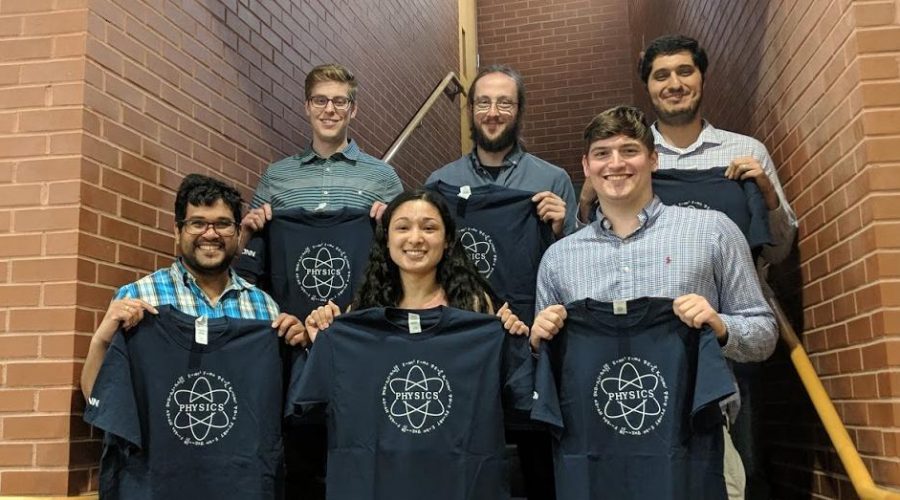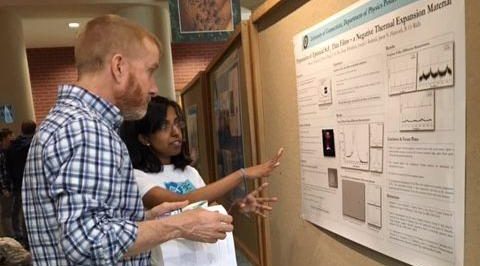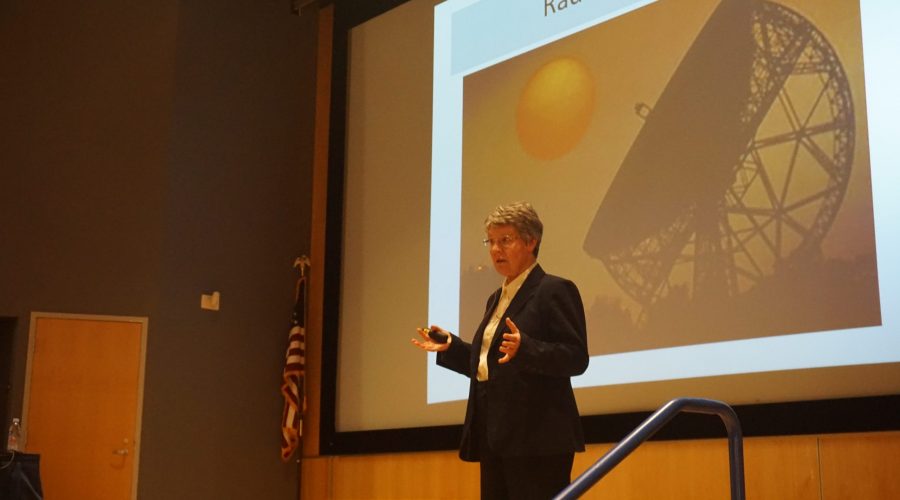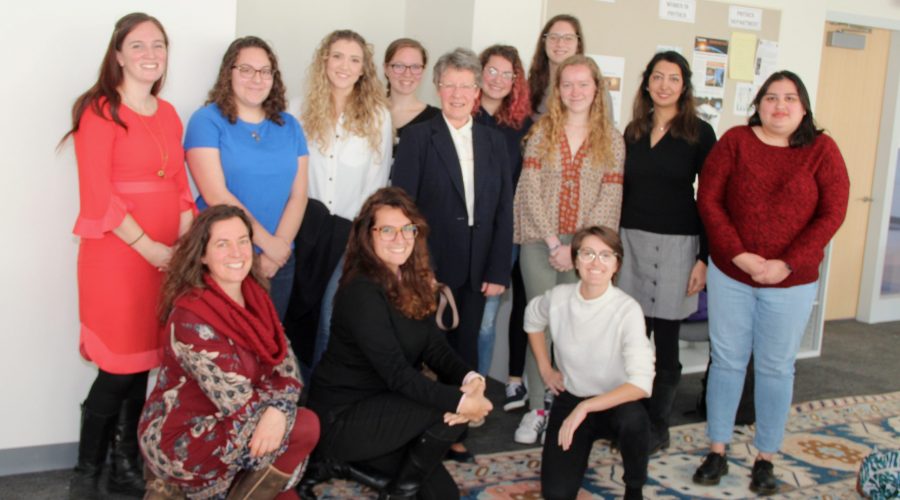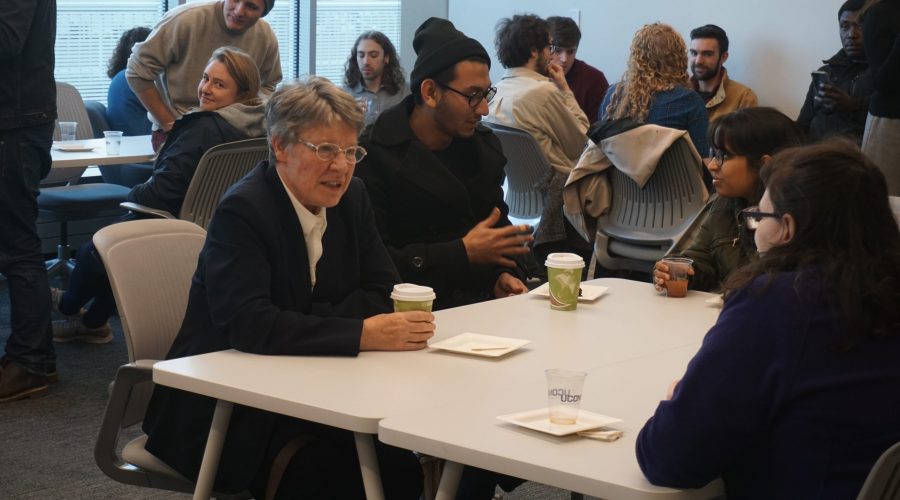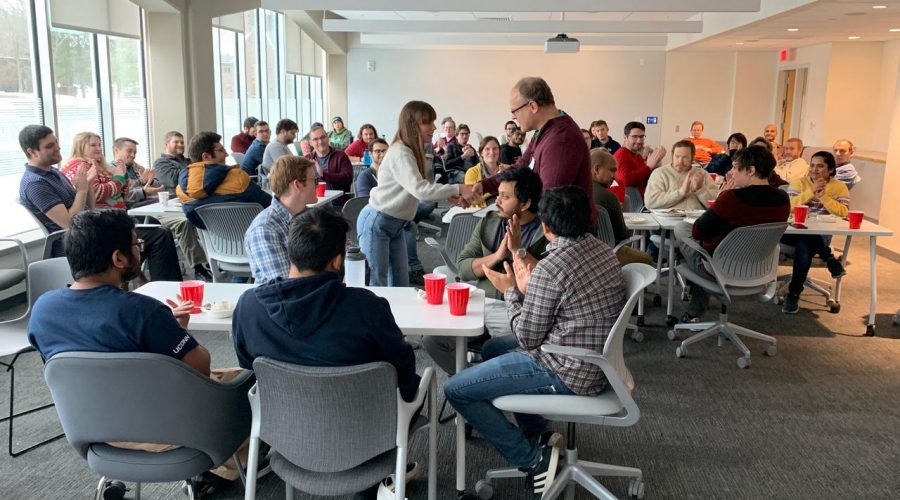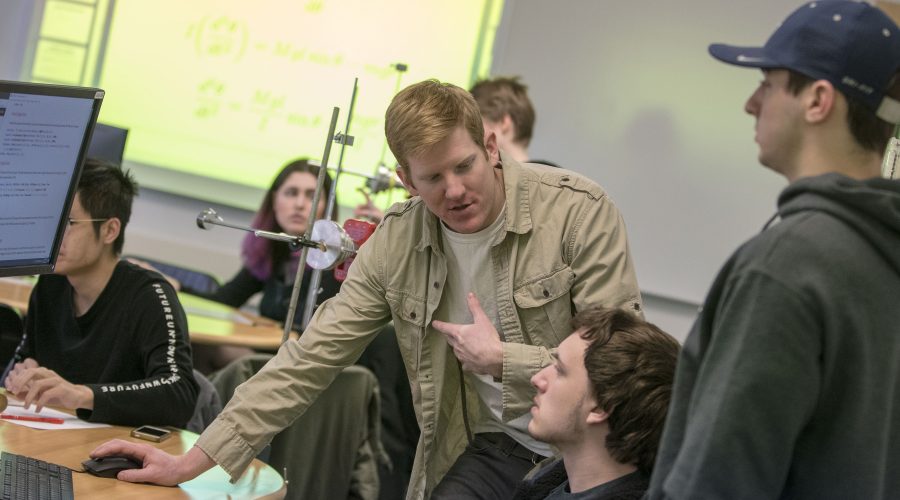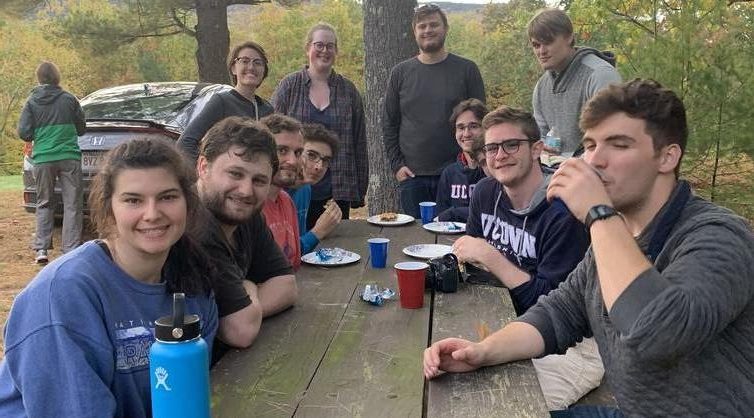 Grads kick off the new 2021-2 year with a hike to Wolf Rock in Storrs
Grads kick off the new 2021-2 year with a hike to Wolf Rock in Storrs
Awardees at Physics Department annual
research poster exhibit, April 24, 2019.


Prof. Dame Jocelyn Bell Burnell,
Discovery of Binary Pulsars
23rd Annual Katzenstein Lecture
University of Connecticut
November 8, 2019
 Prof. Bell Burnell with UConn Women in Physics, November 2019
Prof. Bell Burnell with UConn Women in Physics, November 2019
 Annual awards event honoring outstanding teaching assistants
Annual awards event honoring outstanding teaching assistants Introductory Physics applies hands-on approach to learning
Introductory Physics applies hands-on approach to learning

In Memoriam: William C. Stwalley
We are saddened to share that William (Bill) Stwalley, professor emeritus and former head of the Department of Physics, passed away on Oct. 7, 2025, in Minneapolis, surrounded by his loving family. Bill joined the University of Connecticut in 1993 and led the department with distinction until 2011. He retired in 2016 as a Board […]
[Read More]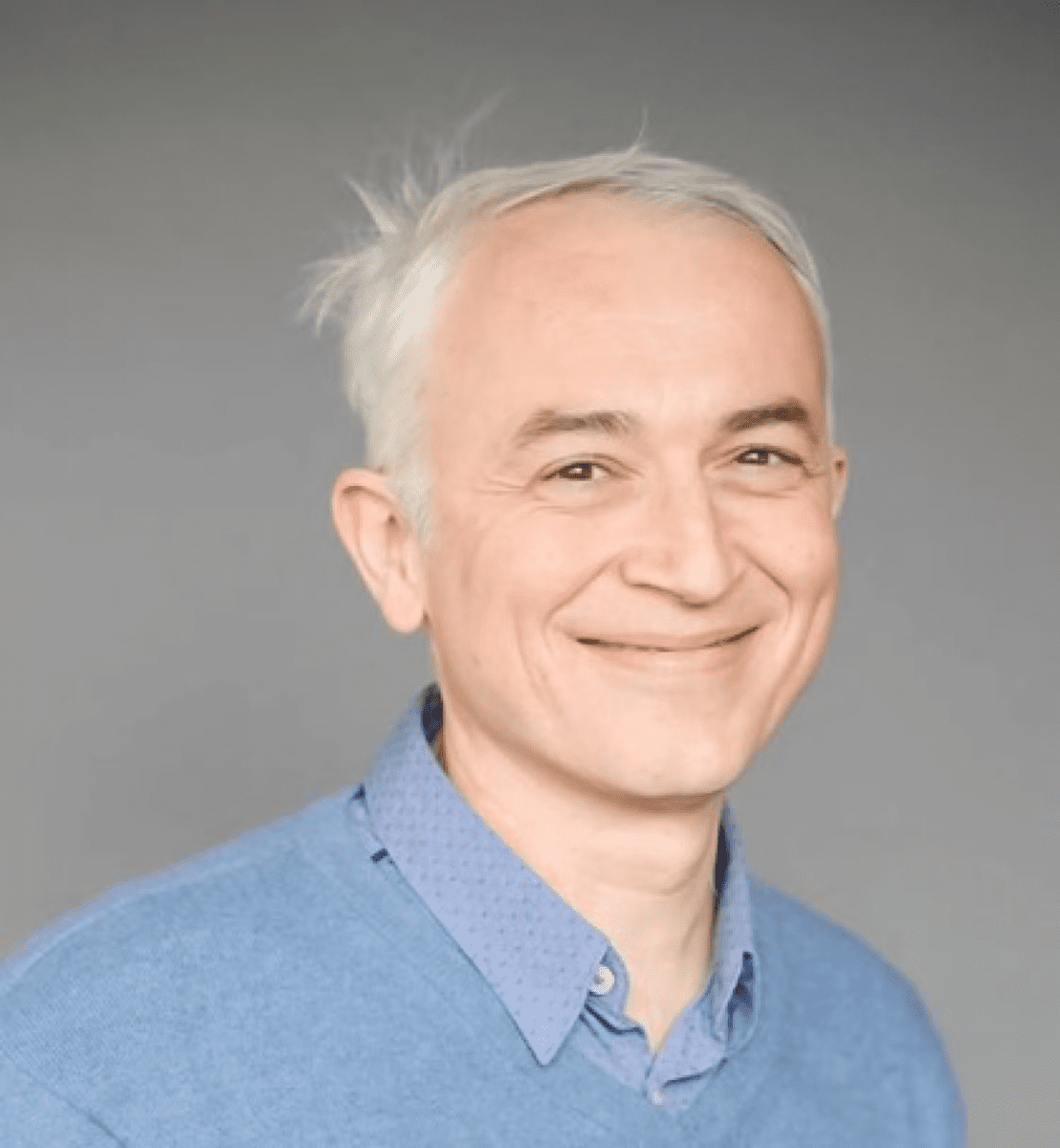
Professor Vladan Vuletić, Pollack Distinguished Lecturer
The University of Connecticut, Department of Physics is proud to announce Edward Pollack Distinguished Lecture will be on Friday, November 7th, 2025. The speaker is Prof. Vladan Vuletić, Department of Physics, MIT. The title of his lecture is “The Quantum Age: From Atomic Clocks to Quantum Computers” For the time and the location of the […]
[Read More]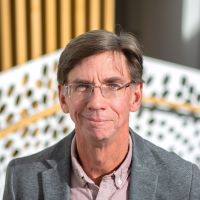
Department Head greeting
Dear Friends of UConn Physics, While I look forward to sharing the news and accomplishments of the Physics Department over the past year, I can’t help but say that one word keeps coming to mind: turbulent. There is no getting around the fact that at the university, state, and federal levels, things have been changing […]
[Read More]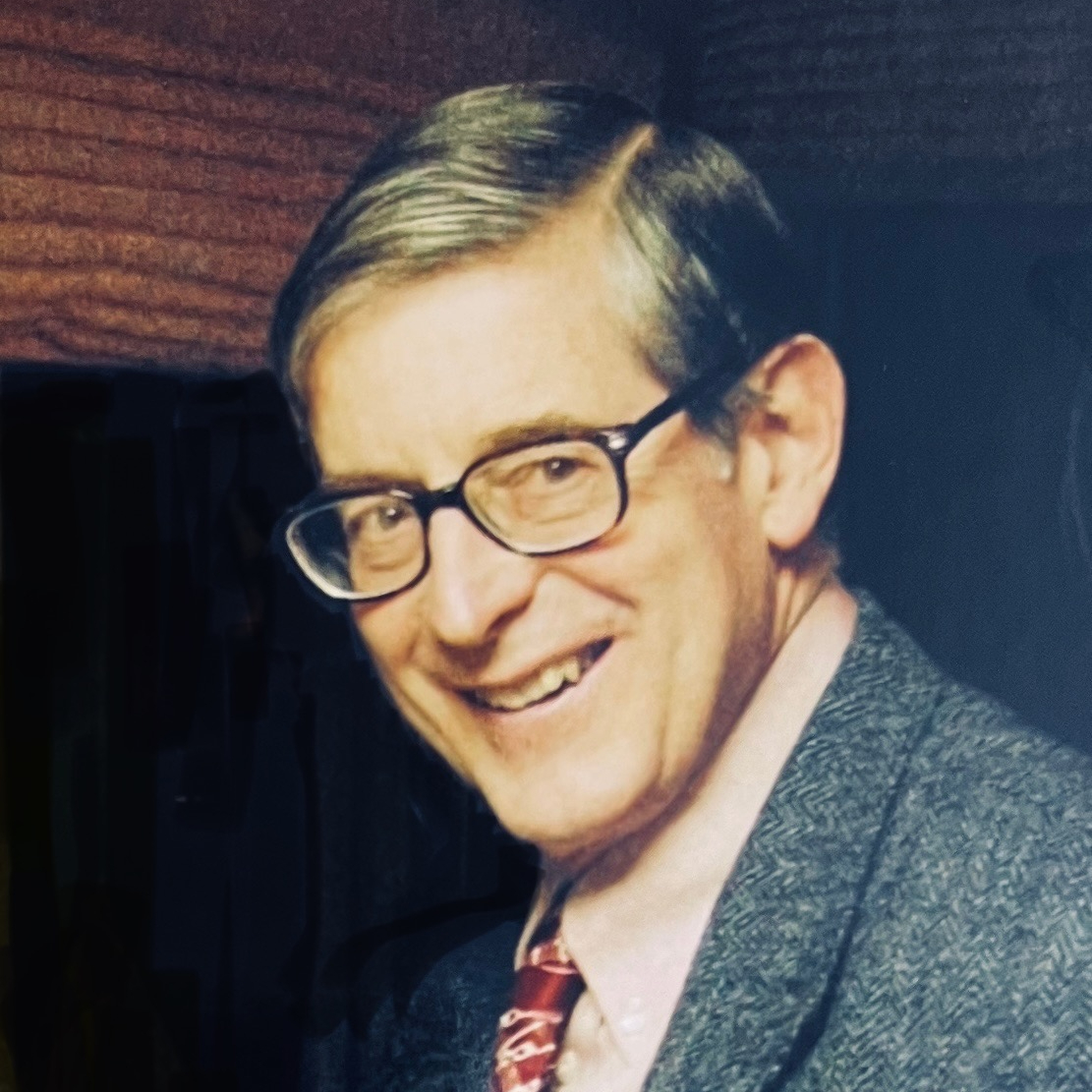
In Memoriam: Professor Winthrop Smith, 1936-2025
Sadly, Prof. Emeritus Winthrop W. Smith passed away in Peabody, MA on April 7, 2025, with his devoted daughter Sarah by his side. After growing up in New Jersey, Win received his undergraduate and graduate degrees in physics from Amherst and MIT, respectively, and then undertook postdoctoral work at the Joint Institute of Laboratory Astrophysics […]
[Read More]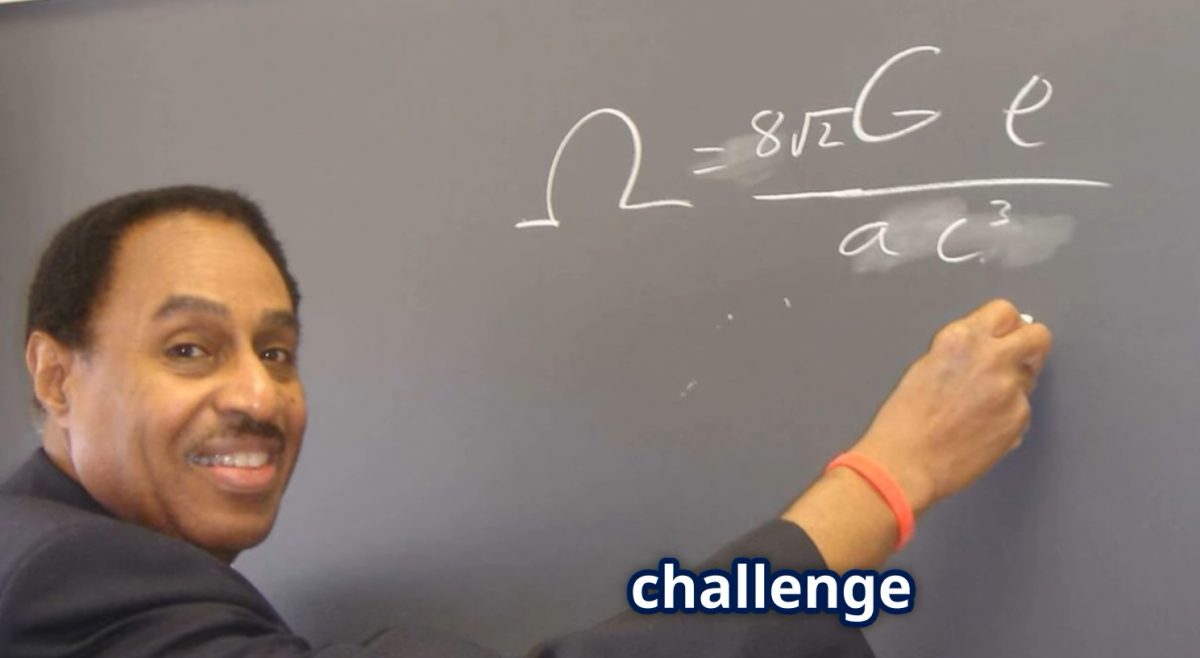
An article in Earth.com describes the research and the life story of Prof. Mallett
“…More than a scientific pursuit, Mallett’s story testifies to human resilience, intellectual courage, and hope’s enduring power. Whether his theoretical time machine ever materializes, his legacy is immeasurable—inspiring countless individuals to challenge conventional limits and perceive time not as an unyielding barrier, but as a boundless frontier awaiting exploration.”
[Read More]